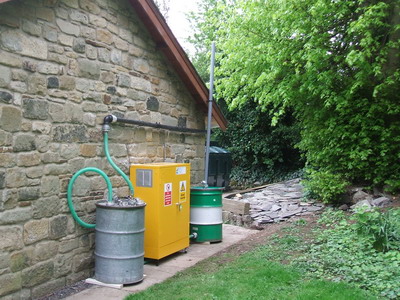Heating Oil Spillage
PROJECT: Removal of Spilled Heating Oil from Residential Property

CLIENT: Homeowner, North East England
DURATION: Nine Months
COST RANGE: £10,000 to £20,000
STATUS: Completed and Validated
WORKS:
- Installation of a number of boreholes around the building.
- Installation of small Soil Vapour Extraction (SVE) system to remove volatile chemicals and instigate biological degradation conditions in the impacted soil.
- Connection of boreholes to SVE system via buried pipework.
- Location of SVE system outside the building in an unobtrusive position.
- Contamination removed without interfering with the day to day activities of the residents.
During a fire at the premises, domestic heating fuel oil was released from a storage tank located adjacent to a wall of the premises. The fuel ran down the external wall and infiltrated the adjacent ground affecting both the fabric of the building and the surrounding soils. The effect on the fabric of the building was evident in staining and elevated TPH levels in surrounding soils. As the contamination was solely in the unsaturated zone, SVE was used to remove the fuel oil over a period of 6 to 9 months.
Boreholes were positioned to remove as much of the contamination as possible without affecting the structure of the building and pipework was situated so as to minimise any disruption to the homeowner. SVE was utilised to provide in situ remediation of the nonvolatile compounds of the hydrocarbon spill by promoting oxygenation and good gaseous exchange within the soil mass allowing natural biodegradation to occur.
SVE had the added advantage of removing volatile components thereby controlling and removing the noxious odours associated with the pollution.
For further information and informal advice contact mail@trm-ltd.com
